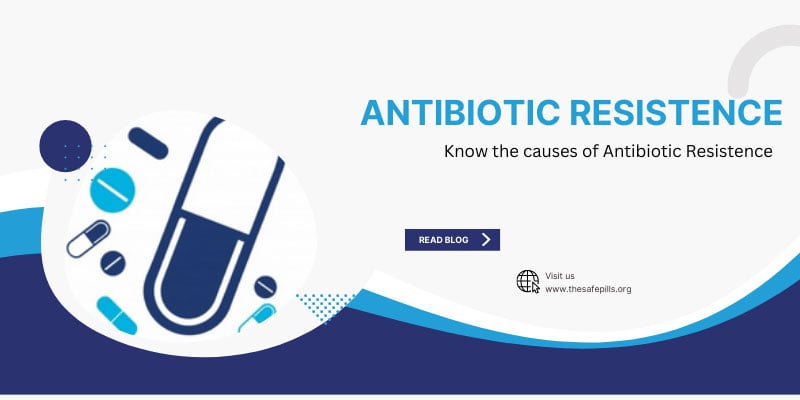-
Choose Store:


- Track Your Order
- My Account
- My Wishlist
- Log In
Amoxicillin: Uses, Advantages, Disadvantages, Interactions and More

Amoxicillin is a drug that belongs to the penicillin group of medications. One of the main uses of Amoxicillin is to fight against bacterial infections or diseases. It falls under the antibiotic category of medicines and inhibits the synthesising process of the bacterial cell wall mucopeptide, thus killing the bacteria. Mucopeptides essentially consist of amino acids that form the crystal lattice-like structure on the cell wall.
Amoxicillin finds its usage similar to another common drug, ampicillin. It is one of the most popular antibiotics prescribed by doctors globally.
Advantages of Using Amoxicillin
Amoxicillin has different uses against different types of bacteria. They are a popular medication group and serve the following advantages.
- Highly active against bacterial infections in the ear, nose and throat areas.
- They are used to treat bacterial diseases in the lower respiratory system, skin and genitourinary tract.
- The drug is specifically prescribed to deal with the following diseases.
- Aerobic gram-positive bacteria groups include enterococcus faecalis, staphylococcus species, and specific strains of streptococcus, like streptococcus pneumonia.
- Aerobic gram-negative bacteria groups, including Escherichia coli, Haemophilus influenzae, Neisseria gonorrhoeae and proteus mirabilis.
- Helicobacter pylori, a bacteria that is responsible for stomach ulcers.
- Amoxicillin, when combined with other drugs like lansoprazole or clarithromycin, can act as a powerful shield against duodenal ulcer bacteria, a painful bacterial recurrence.
- Amoxicillin is usually well tolerated by the human body, showing none to minimal side effects.
- Amoxicillin is a popular drug available across all pharmacies and commonly used.
Disadvantages of Using Amoxicillin
Amoxicillin can show particular side effects. Although rare, not every body type or immune system reacts to this drug appropriately. Here are certain side effects and downsides of consuming Amoxicillin.
Common side effects include
- Nausea
- Diarrhoea
- Headache
- Taste perversion
- Abdominal pain
- Skin rashes
- Allergic reactions in people with allergies to penicillin. This phenomenon is known as anaphylaxis and is pretty rare (accounting for less than 0.01% of Amoxicillin users)
If you face any of the mentioned side effects, stop using the drug immediately and contact your doctor for assistance.
Apart from side effects, here are certain other downsides to using this drug.
- Inactive against the bacterial strain of beta-lactamase.
- Staphylococci bacteria are resistant to Amoxicillin drugs since it is resistant to methicillin and oxacillin.
- Severe diarrhoea is a side effect of any antibiotic drug, including Amoxicillin. It is caused by yet another bacteria, Clostridium difficile.
- People who are administered with ampicillin-like antibiotics like Amoxicillin and suffer from mononucleosis can develop severe skin rashes.
- May dismantle urine results by showing false levels of glucose.
- Children or adults with a history of kidney, lung and liver diseases have a higher risk of developing side effects from Amoxicillin.
Expert Tips When Using Amoxicillin
Since Amoxicillin is a powerful drug, here are some expert tips and precautionary measures when using it.
- Consume the directed dosage. Taking an over or under-dose can cause serious health implications. Usually, depending on the type and severity of the infection, Amoxicillin is administered every eight to twelve hours apart. Ensure that you complete the course and do hot leave any dosage.
- It can be taken before or after a meal. Follow the guidelines issued by your doctor.
- Amoxicillin is available as both oral suspension and chewable tablets, given your requirement.
- Stop the usage and contact your physician immediately if you notice any severe side effects like breathing trouble, swelling or rashes and tightness of the throat or chest areas after consuming the drug. Consult your doctor even if you develop a long-standing rash or diarrhoea.
- You might need to undergo blood, kidney and liver function tests if you are a long-term consumer of Amoxicillin. Consult your doctor regarding this issue.
- If you consume Amoxicillin for diseases like gonorrhoea, you might need to check for STDs (Sexually Transmitted Diseases) tests like syphilis every three months.
Effectiveness of Amoxicillin
Here is how Amoxicillin is effective after administration in the human body.
- Depending upon the dosage, Amoxicillin is rapidly absorbed in the body in the case of an oral suspension. It usually takes around 1-2 hours to get properly absorbed. However, in rare cases, it takes up to 24-72 hours to get absorbed.
- Amoxicillin is usually distributed throughout body tissues and the blood pretty efficiently. However, in the case of the brain and spinal cord, it gets absorbed only if the meninges suffer from inflammation.
Conclusion
Amoxicillin is a popular drug administered to fight even the most fatal bacterial diseases in the human body. Besides being readily available, this drug is highly efficient and rapid in its functioning. Despite a few side effects that might occur in rare instances, this drug ja pretty safe to consume under proper prescription and dosage. Dosage is usually set by the concerned doctor depending on the severity and intensity of the bacterial disease alongside the medical history and other drug interactions of the patient.








